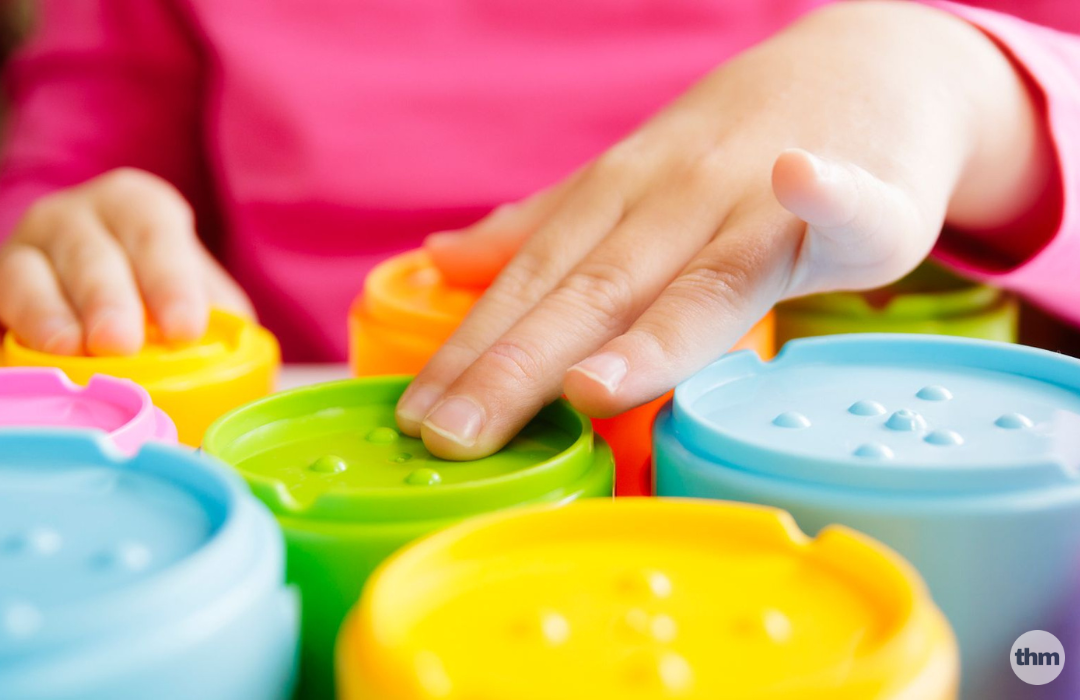
Sensory Toys for Kids with Special Needs
This page contains affiliate links for which we may be compensated
Last updated: July, 2025
Sensory toys play a pivotal role in the development and well-being of children, especially those with special needs. These specialized toys offer a range of tactile, auditory, and visual stimuli, aiding in sensory processing, regulation, and engagement. In this article, we explore various types of sensory toys and their benefits for children with special needs.
Why Are Sensory Toys Important
Sensory toys serve a crucial role in the development and well-being of children, particularly those with special needs. There are several reasons why these toys are important:
- Sensory Stimulation: Sensory toys provide various forms of sensory stimulation, including tactile, auditory, visual, vestibular, and proprioceptive input. This stimulation is essential for helping children with special needs regulate their sensory experiences, process sensory information more effectively, and develop sensory integration skills.
- Sensory Processing: Children with special needs, such as autism spectrum disorder (ASD), sensory processing disorder (SPD), or attention-deficit/hyperactivity disorder (ADHD), often experience challenges with sensory processing. Sensory toys offer opportunities for children to explore and engage with different sensory stimuli in a controlled and supportive environment. This exploration can help desensitize hypersensitivities, increase sensory awareness, and improve sensory modulation.
- Self-Regulation: Sensory toys can aid in self-regulation by providing calming or alerting sensory input. For example, weighted blankets or compression vests can offer deep pressure stimulation to help calm an overstimulated child, while fidget toys or therapy swings can provide proprioceptive and vestibular input to increase alertness and focus. By incorporating sensory toys into daily routines, children can learn effective self-regulation strategies to manage their sensory needs and emotions.
- Engagement and Exploration: Sensory toys promote engagement and exploration, fostering curiosity, creativity, and problem-solving skills. These toys offer opportunities for open-ended play, allowing children to experiment with different textures, sounds, and movements. By encouraging active participation and sensory-rich experiences, sensory toys support cognitive development, social interaction, and language skills.
- Inclusive Play: Sensory toys promote inclusive play by catering to a diverse range of sensory preferences and abilities. Whether a child seeks sensory input or avoids certain sensations, there are sensory toys available to accommodate their individual needs. This inclusivity helps children with special needs feel empowered, accepted, and supported in their play experiences, fostering positive self-esteem and social connections.
Fidget Toys:
Fidget toys are small, handheld objects designed to provide sensory input through touch and manipulation. These toys can help children with special needs, such as ADHD or autism, improve focus, reduce anxiety, and enhance fine motor skills. Popular fidget toys include stress balls, fidget spinners, and textured tactile discs.
Tactile Toys:
Tactile toys focus on stimulating the sense of touch and are beneficial for children with sensory processing disorder (SPD) or tactile defensiveness. These toys come in various textures, shapes, and sizes, providing opportunities for sensory exploration and desensitization. Examples include squishy balls, textured fabrics, and bristle brushes.

Therapy Swings:
Therapy swings offer vestibular and proprioceptive input, aiding in sensory integration and regulation. These swings provide a calming and organizing effect on children with sensory processing challenges, promoting relaxation and focus. Therapy swing options range from hammock swings to platform swings, catering to different sensory needs and preferences.
Sensory Chew Toys:
Sensory chew toys are specifically designed for children who seek oral sensory input or have a tendency to chew on non-food items. These toys help satisfy the need for oral stimulation in a safe and appropriate manner, reducing chewing on clothing or objects. Silicone chew pendants, chewable bracelets, and textured chew toys are popular choices among caregivers.
Sensory Bins:
Sensory bins offer a multisensory experience by combining various materials like rice, sand, water beads, or sensory-friendly objects. These bins encourage exploration, imagination, and tactile discrimination while promoting calmness and engagement. Sensory bins can be customized based on a child’s preferences and sensory goals, providing endless opportunities for play and learning.
Light-up Toys:
Light-up toys captivate children’s attention with their visual appeal and stimulation. These toys incorporate colorful lights, patterns, and movements, enhancing visual tracking, attention, and visual-motor coordination. Light-up toys come in different forms such as light-up balls, wands, or sensory light tables, catering to diverse sensory needs and interests.

Musical Instruments:
Musical instruments offer auditory stimulation and creative expression, making them valuable tools for sensory play and exploration. Playing musical instruments can help children with special needs improve auditory processing, sensory modulation, and motor coordination skills. Instruments like pianos, drums, xylophones, and shakers allow children to engage in rhythmic activities and sensory-rich experiences.
Balance Boards:
Balance boards promote proprioceptive input and core strength, aiding in sensory integration and motor development. These boards challenge balance and coordination skills while providing a calming effect on the nervous system. Balance boards come in different shapes and sizes, allowing children to engage in dynamic sensory activities indoors or outdoors.
Conclusion
Sensory toys play a vital role in supporting the unique sensory needs of children with special needs. Whether it’s providing tactile stimulation, auditory input, or vestibular feedback, these toys offer a safe and enjoyable way for children to explore and engage with their environment. By incorporating sensory toys into daily routines and activities, caregivers can help children with special needs thrive and reach their full potential.